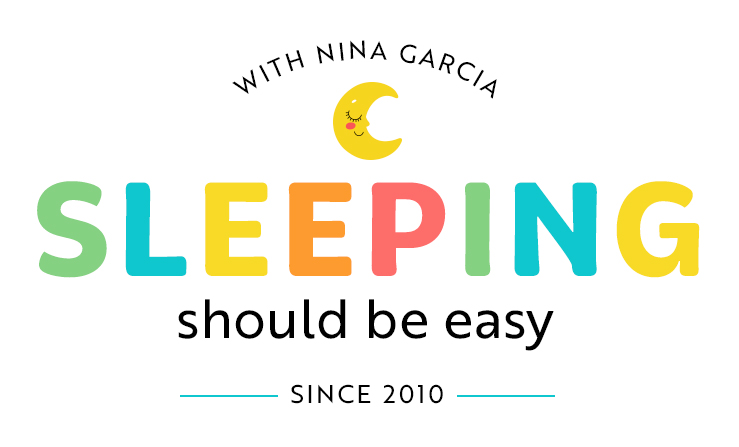How to Stop Your 2 Year Old’s Bedtime Tantrums
Does your 2 year old throw bedtime tantrums every night? Crying and screaming can take over your evenings and leave everyone exhausted. In this article, I’ll share several solid strategies you can try to stop this behavior.

I used to look forward to bedtime ever since my son could sleep through the night. But that all changed when, for a week straight, he started having major tantrums every night.
Just about anything triggered these tantrums, from wanting a cup of water to his blanket not tucked in correctly. He cried for what seemed like forever, sometimes not going to sleep until 11pm out of sheer exhaustion.
I didn’t want to rely on timeouts or typical punishments, but I still wanted to hold my ground and avoid catering to his whims. Scrambling to find a solution, I tried a few tactics.
Thankfully… they worked. The tantrums stopped, and not only because I waited for a phase to pass, but because of these tips that anyone can try. Check out what worked to stop these bedtime tantrums once and for all:
Table of Contents
Talk about “the plan”
If your 2 year old refuses to sleep, one strategy is to start talking about what she might expect long before bedtime rolls around.
Describing “the plan,” or what will happen at bedtime, can make these activities feel more familiar. She’ll also be more invested in following through with them when she has conspired with you on these activities.
Describe the events of the day and say, “After dinner, we’ll play for a bit, then watch television. Right after the show, we’ll brush your teeth, get you out of your clothes, and into the bathtub.
“After bath time, we’ll put on your pajamas and read a bedtime story. Then, we’ll sing our bedtime song, turn off the light, and say goodnight. I’ll leave the nightlight on so you can still see. I’ll be right in the next room, and then in the morning, we’ll give each other big hugs!”
Do this for several days, and follow through with the plan so she can begin to hear and experience it happen. And don’t just talk about it right before you start your routine. Instead, discuss it during the day when neither of you are stressed or about to throw a fit.

Give a head’s up
One of the biggest reasons bedtime tantrums happen is because of the abrupt transition from one activity to the next.
Your child might be so focused on a project or having fun playing. Springing bedtime on her out of the blue doesn’t allow for a smooth transition and makes it feel like a dreaded activity.
Instead, let her know a few minutes before you plan to transition to the next activity. Say, “We’ll run your bath water in 10 minutes.” Give further warnings, like when you reach the five–minute mark.
And finally, once it’s nearly time to bathe, encourage her to wrap up her activity. Maybe that means she gets one last roll of the ball or starts gathering the building blocks together.
Set clear indicators
Every parent has had that negotiation. You know, the one where your child says, “One more book?” or takes forever to walk to the bathtub.
And no wonder—if you don’t have clear indicators around bedtime, it’s easy for him to find a way to draw it out longer or postpone it for as long as possible.
Just as important as it is to talk about “the plan,” so too should you set clear indicators he understands. This means keeping your word when you say bath time starts promptly at 6:45pm, or that he only has one minute to pick pajamas.
Visual cues can make these indicators even clearer. For instance, point to the numbers of a clock to show what 6:45pm looks like. If you both decided to read four books, remove four of them from the shelf to avoid extending it to five or six.
Acknowledge your child’s emotions
Tantrums baffle many of us because they seem to come out of nowhere, but how your child feels isn’t always so neatly traced to a particular turning point. While all may seem fine on the outside, he might be going through a lot on the inside.
For instance, he may be adjusting to a new school, affecting how clingy he is to you. Maybe all he hears is “no” all day and reacts in a fit come bedtime.
Acknowledge the anger, sadness, anxiety, and other emotions he may feel. Don’t brush it aside as petty or repetitive (“Another tantrum?!”). Show him you understand the depth of his feelings—that he is heard.
And watch what happens. With this simple act of empathy, he’ll melt his defenses, be more willing to comply, and know that you’re on his side.
Offer choices
Power struggles often crop up because kids sense a lack of control in their lives. After all, we determine when they sleep, what to eat, and where to go for the day. Add these up and it’s no wonder that kids feel restricted and bossed around.
Giving choices can empower your child with a voice. Yup, even over something as simple as which pajamas to wear or whether he’d like to bring a stuffed animal to bed.
You might start your bedtime off by giving him a choice between two stuffed animals to hold or books to read. Ask him if he’d like the door completely shut or left ajar. See if he prefers the nightlight next to his bed or by the closet.
With a say in the matter, he’ll be more invested in bedtime and likelier to follow through—after all, he made the decisions, not you.
Don’t enable habits you don’t want
Sometimes we do what we have to do to get through the night, but taken too far, this can send mixed signals. Your child gets used to this way of sleeping and begins to accept it as normal.
Be intentional with the choices you make and decide that you’ll no longer enable unsustainable habits that aren’t working for you.
For instance, if you don’t want to spend two hours in her room, then decide not to do so. Tired of negotiating with her in the middle of the night? Nip it in the bud, even if it means that she screams and cries longer than you wanted.
We can point the finger at our kids all day long, but we’re the ones responsible for enabling these habits to happen. Yes, she threw a fit, but a fit didn’t force you to make the choices you did. The quicker you accept responsibility for the role you play, the quicker you can find solutions for it.
Make a list of the habits you want to change, from staying in her room until she falls asleep to letting her sleep in yours. Then, write what you want to see. Having an image of your ideal sleep scenario will keep you focused and resolute when you start to waver.
Hold your ground
When your patience is running thin, it’s tempting to give in to every request your 2 year old makes. One more book? Okay, fine. Want to get out of the crib? Just this one time. Except, of course… we all know how it ends.
At the end of the day, remember: you are the parent.
Don’t let her talk you into unreasonable demands or unsustainable habits. If you do need to compromise, make sure you have a deadline in mind so this pattern doesn’t continue (for instance, letting her sleep with you while she’s sick). Enforce consequences for bedtime battles so she knows you mean your word.
And don’t engage in a fight. As tempting as it is to yell, get upset, and otherwise react to her antics… don’t. This only “rewards” the very behavior you’re trying to avoid. Think of it this way: the angrier you get, the more “reason” she has to engage in a fight.
On the flip side, the calmer you remain, the more she’ll mirror your behavior and calm down as well. I know, easier said than done—it’ll be difficult in the beginning but will get easier over time.

Praise your child the next morning
Your night may have been rough, what with your 2 year old waking up at night for hours.
Still… he did it. He slept in his bed without resorting to old habits.
So, the next morning, praise him for the progress he made. Even if he still threw a bedtime tantrum and woke up zillions of times, acknowledge the steps he took that you’d like him to continue doing. Praise him for:
- Sleeping in his room alone.
- “Only” waking up two times instead of the usual four.
- Hugging his lovey for comfort.
- Waking up without crying.
You may not have had the perfect night, but the more you praise the behavior you want to see, the more confident and motivated he’ll be to continue them.

The bottom line
Dealing with your 2 year old’s bedtime tantrums can make for one stressed out parent. Thankfully, you can do plenty to turn things around. No more nightly tantrums, friend! Now you can look forward to bedtime once again.
Get more tips:
- 14 Examples of a Daily Routine for a 2 Year Old
- How to Establish a 2 Year Old Bedtime
- 2 Year Old Sleep Regression Solutions That Work
- What to Do When Your 2 Year Old Still Wakes Up at Night for Milk
- 7 Things You Should NOT Do with a Defiant 2 Year Old
Free resource: If you’re exhausted and feeling guilty from losing your temper with your child, rest assured you’re not alone. In How to Finally Stop Losing Your Temper, I’ll show you how to reflect on your habits and triggers and what you can do when you feel that rush of anger rising. Grab your PDF below—at no cost to you. You’ll also get my newsletters, which parents say they LOVE:
“Thank you so much. It’s lovely reading your email and it’s working a lot with my parenting challenges! I’ll be looking forward to the next ones!” -Kiran Gardezi

